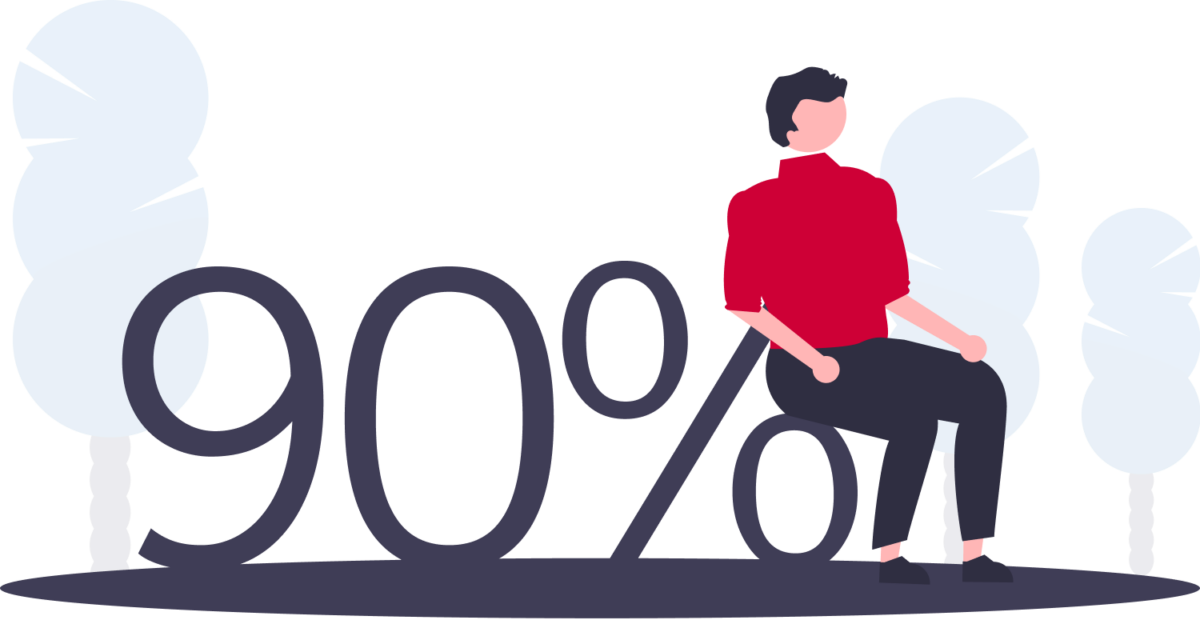“Cardiac arrest” is a frightening phrase, and for good reason. Cardiac arrest statistics in 2022 revealed that 356,000 people in the United States experience cardiac arrest outside of hospitals each year, while the CDC reports heart disease as the leading cause of death in the United States. Close to 90% of cardiac arrest victims are unable to be revived, and those who survive can experience long-term damage to their health.
Those are sobering numbers. Healthcare staff must understand how to avoid cardiac arrest by recognizing the conditions that precede it, and the populations who are most at risk. To do this, we first need to know what cardiac arrest is and what causes it.
What Is Cardiac Arrest, Exactly?
Cardiac arrest occurs when someone’s heart stops beating suddenly. This is usually the result of an interruption in the functioning of the cardiac conduction system—a network of cells that transmits electrical signals that keep your heart beating. Cardiac arrest can be triggered by severe trauma, pre-existing medical conditions, or new onset of medical issues.
In cardiac arrest, the heart’s electrical system becomes chaotic, leading to ventricular fibrillation (a rapid, irregular heartbeat), ventricular tachycardia (an extremely fast heartbeat), asystole (no electrical activity), or pulseless electrical activity (electrical signals, but no mechanical heartbeat). In any of these cases, immediate treatment is required to restore the heart’s normal rhythm.
Cardiac arrest patients will not be able to be revived unless they receive CPR. Even with emergency medical treatment, the survival rate for out-of-hospital heart attacks is only about 1 in 10.
Why Is the Fatality Rate So High?
Without blood carrying oxygen to the brain and other organs, they get damaged and die very quickly. Your brain can only go four to six minutes without oxygen before experiencing permanent damage or death.
In cases of cardiac arrest, the patient’s only hope is to replace the functioning of the heart through cardiopulmonary resuscitation (CPR) while defibrillation via an AED or manual heart monitor, medications to chemically help the heart or other specialized procedures attempt to fix the cause of the cardiac arrest.
Even when resuscitation is successful, the prognosis for many patients is not bright. Lack of circulation for any amount of time is extremely dangerous and can cause fatal tissue damage, even if bystanders or health professionals (like EMTs, firefighters, or paramedics) manage to restart the person’s heart.
Good To Know: An EMT has roughly 200 hours of education, while a paramedic has an additional 1,000+ hours. Bystanders and health professionals can and do save people prior to EMS arrival – so don’t discount your ability to be of service.
What Is the Difference Between Heart Attack & Cardiac Arrest?
Though they both involve the heart, there are several marked differences between a heart attack and cardiac arrest. Here, we’ll review their respective causes, symptoms, and treatments.
Causes
A heart attack, or myocardial infarction, happens when one or more of the 2 main coronary arteries is blocked, typically by a blood clot that forms in a narrowed or damaged artery. Cardiac arrest, by contrast, is caused by the sudden and unexpected loss of heart function.
Symptoms
The most recognizable symptoms of a heart attack include chest pain which can radiate to the left arm, jaw, or back. Other symptoms include shortness of breath, nausea, lightheadedness, and cold sweats. Cardiac arrest presents suddenly and without warning.

Treatment
Treating a heart attack means restoring blood flow to the blocked artery. This can be done with clot-dissolving medications (thrombolytics) or performing surgeries like angioplasty and stent placement, or coronary artery bypass grafting (CABG) to open the blocked artery and reestablish blood flow to the heart muscle. Cardiac arrest requires immediate CPR and AED usage to shock the heart back into a normal rhythm.
With cardiac arrest, the underlying cause needs to be addressed – see the list of risk factors below. Both heart attack and cardiac arrest require immediate medical attention.
Outcome
With immediate and proper treatment, the long-term survival rate from heart attacks is 97-98%. Some heart attacks can lead to cardiac arrest. Survival from cardiac arrest depends on the underlying cause, the speed of response, and the effectiveness of CPR and defibrillation. The longer treatment is delayed, the worse the prognosis.
What Are the Biggest Cardiac Arrest Risk Factors?
As reported by the Mayo Clinic, there are a variety of factors that contribute to a person’s likelihood of experiencing a heart attack, from diseases to genetic conditions.
These factors include:
- Coronary artery disease
- History of heart attack
- Enlarged heart (attributed to cardiomyopathy)
- Heart valve disease
- Congenital heart defects
- Heart signaling issues (conditions like Long QT and Braga syndrome)
Healthcare professionals, caretakers, and patients should monitor these risk factors carefully. If the patient has a family history of heart disease or congenital heart defects, make sure they understand the steps they can take to reduce their specific risk.
In addition to disease, some kinds of acute trauma or injury can cause cardiac arrest. Emergency medical personnel should understand that electrocution, asphyxiation, and severe blows to the chest can cause cardiac arrest.
How to Recognize Cardiac Arrest
Given its high mortality rate, everyone on your staff must understand how to avoid cardiac arrest.
Signs of cardiac arrest include:
- Sudden collapse or loss of consciousness
- Not breathing, or gasping for air
- No response to shouting or shaking
- No pulse
While the above signs indicate an immediate need for life-saving treatment, the warning signs of heart attack, a key cause of cardiac arrest, have a slightly longer runway.
Possible warning signs of a heart attack include:
- Chest pain, described as squeezing or tightness
- Radiating pain into arms (often left), neck, or jaw
- Shortness of breath (more common in women than men)
- Unexplained tiredness (more common in women than men)
- Back pain (more common in women than men)
- Flu-like symptoms
- Belly pain, nausea, and vomiting
- Repeated dizziness or fainting
- Heart palpitations, or feelings of heart racing, fluttering, or skipping a beat
On top of knowing the signs, your patients’ risk of cardiac arrest is significantly reduced when they live a more healthy lifestyle, including exercise and weight management. Avoiding alcohol and tobacco can help reduce risk, as can eating a heart-healthy diet. Make sure that at-risk individuals get regular medical screenings to ensure their heart is in good shape.
How to Make Sure My Staff Can Handle Cardiac Arrest?
While an ounce of prevention is worth a pound of cure, knowing how to prevent cardiac arrest is not enough. When there is an emergency, you need to be able to trust your staff can handle it quickly and effectively.
ProTrainings can make sure everyone on your staff is ready to save lives. Getting your whole staff properly trained and CPR certified has never been simpler. Contact us today to learn how ProTrainings can help you make getting your staff CPR certified easier and more efficient.
